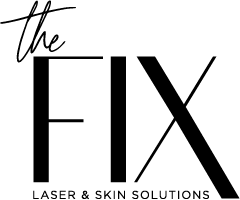Service
PRP for Hair Restoration
Overview
Platelet-rich plasma (PRP) is an emerging treatment that physicians use to accelerate the healing in various parts of the body, including follicles from which your hair grows. PRP therapy is one of the best solutions for hair loss available today. PRP is a substance drawn from your blood and injected back into your scalp to restore hair growth.
- Treatment Duration: 45-60 MINUTES
- Discomfort Level: 3
- Downtime: NONE
The Details
How it Works
PRP is a three-step process.
Step 1: Your blood is drawn and put into a centrifuge (a machine that spins blood rapidly to separate fluids of different densities).
Step 2: After about 10 minutes in the centrifuge, your blood will have separated into three layers: platelet-poor plasma, platelet-rich plasma and red blood cells.
Step 3: The platelet-rich plasma is drawn up into a syringe and then injected into the treated area(s).
The substantial concentration of platelets (compared to normal blood) represents a unique source of growth factors. After it is injected into the targeted tissue, the platelets are activated endogenously by the coagulation factors normally present in the tissues. This activation leads to a significant degradation of the platelets which promotes the release of a series of growth factors and proteins. After injection, these proteins and growth factors interact with the basal cells in the subcutaneous tissue. After binding to their specific cell receptors, the glycoproteins and the growth factors activate the various intracellular processes that contribute to tissue rejuvenation.
Research shows that high concentrations of platelets in plasma cells help promote hair growth by prolonging the growth phase of the hair cycle. If hair is in a “sleeping state,” treatments will stimulate the hair follicle to turn on or, if it is already “awake,” it gives the follicles a boost, helping the hair to grow longer or thicker.
Treatment Preparation
Maintain a healthy diet and drink at least 64 oz.’s of water the day of your treatment.
The day of your treatment, wash and condition your hair thoroughly so that the scalp is clean.
Do not dye or color your hair within 3 days of treatment.
Discontinue use of anti-inflammatory drugs such as Aspirin or Ibuprofen at least 3 days to 1 week prior to treatment.
It is recommended that you avoid: Alcohol, caffeine, Niacin supplement, spicy foods and any products containing nicotine 3 days before and after your treatment (all of these may increase bruising).
Keep your hair and scalp free of any infection for at least 1 week prior to your treatment.
If you develop a fever, cold/flu or develop a cold sore, blemish or rash in the area to be treated prior to your appointment, we must reschedule you (we will not treat you).
If you have a special event or vacation coming up, we recommend you schedule your treatment at least 2 weeks in advance (but we prefer 3 to 4 weeks).
If you are being treated in the lip area and have a history of Herpes (cold sores) with outbreaks more than 4 times a year, we may recommend you are pretreated with medication.
If you have been on Systemic use of Corticosteroids (steroids) within 2 weeks of treatment, we cannot treat you. Consult your physician for approval to discontinue the use of steroids and receive treatment.
Areas that can be Treated
PRP treatments for hair thinning and hair loss are performed on the client’s scalp.
What it Feels Like
Your physician will administer multiple injections with a tiny ultra-fine needle into the scalp.
Most clients get injections without any numbing, as there is minimal to mild discomfort. However, a topical anesthetic can be applied to help minimize discomfort in the event it occurs.
Expected Results
Results are generally visible 4 weeks after treatment and will continue to improve gradually over ensuing 3 to 6 months. Current data shows results may last 18 to 24 months. Of course all individuals are different so there will be variations from client to client.
Researchers see promising results from PRP therapy. Most clients will see at least 30% more growth in thinning areas.
PRP treatments stimulate hair follicles, helping the hair to grow longer and thicker. You should begin to see marked improvements in hair growth and reduced hair fall within a couple of months of treatment.
Results of PRP for hair loss will look different for everyone based on overall health, blood platelet levels and hair health.
Number of Treatments
Most PRP therapy requires at least 3 treatments, spaced 4 to 6 weeks apart.
Maintenance treatments are required every 4 to 6 months thereafter.
After Care
Post-Treatment
Do not touch, press, rub or manipulate the treated area(s) for at least 8 hours after your treatment.
Avoid Aspirin, Motrin, Ibuprofen, Aleve (all non-steroidal and steroidal anti-inflammatory agents), Gingko Bibola, Garlic, Flax Oil, Cod Liver Oil, Vitamin A, Vitamin E, or any other essential fatty acids for at least 3 days to 1 week after your treatment.
If you experience discomfort and pain you make take Tylenol or other Acetaminophen products.
You may apply ice if you with to the injected area for 20 to 3o minutes after the procedure, but we would prefer if you can refrain from this.
Do not wash or take a shower for at least 6 hours after your treatment.
Do not use any lotions, creams, or make-up for at least 6 hours after your treatment.
Avoid vigorous exercise, sun and heat exposure for at least 3 days after your treatment.
Avoid alcohol, caffeine, and cigarettes for 3 days after your treatment.
Maintain a healthy diet and continue water intake for 1 week after treatment.
Follow Up
For best results of PRP, an initial series of 3 treatments is recommended.
Maintenance or touch-up treatments may be needed every 4 to 6 months after completion of your initial series of treatments.
Recommended Products
- Minoxidil
- Spironolactone
- Finasteride
Is this Suitable for Me?
Yes
- Anyone experiencing hair thinning or hair loss is essentially a good candidate for PRP treatments. Those with early hair loss or thinning tend to respond best.
- Patients with androgenic alopecia (genetic type of hair thinning seen at the top of the head)
- Treatments are effective for both men and women
No
- If you have a special event of vacation upcoming (we recommend you receive treatments at least 3 to 4 weeks prior)
- Systemic use of corticosteroids within 2 weeks of the procedure
- Acute and chronic infections
- Skin diseases
- Cancer/Chemotherapy treatments
- Severe metabolic and systematic disorders
- Chronic liver pathology
- Anti-coagulation therapy
- Underlying Sepsis
- Platelet dysfunction syndrome
- Critical thrombocytopenia
- Hemodynamic instability
- Septicemia or local infection at injection site
Side Effects, Risks & Complications
It is normal to experience bruising, redness, itching, swelling and/or soreness that may last for 3 to 10 days following your procedure. It you experience any pain or discomfort, you may take Tylenol or other Acetaminophen-containing products as directed.
Less common side effects of PRP include blood vessel injury on the scalp, nerve injury, infection at the injection site and calcification or scar tissue where the injections are done.
Side effects from the anesthesia used during the procedure, such as muscle aches, confusion or bladder control issues may occur.
The “Dual-Spin PRP” Difference
Not all PRP is created equal. Most PRP therapies on the market utilize a single spin system. Our dual-spin centrifuge protocol yields a significant higher concentration of platelets and has other benefits as well. Total cells delivered (CD34+) using dual-spin technologies are considered higher and is needed since CD34+ are markers for stem cells and will reside in the mononuclear fraction. So, not only is there a larger concentration of stem cells but also stem cell markers when using dual-spin technologies. Consequently, dual-spin systems maximize platelet recovery and results.
After Care
Post Treatment
Place Holder for breaking up text
Testimonials
What They Say



